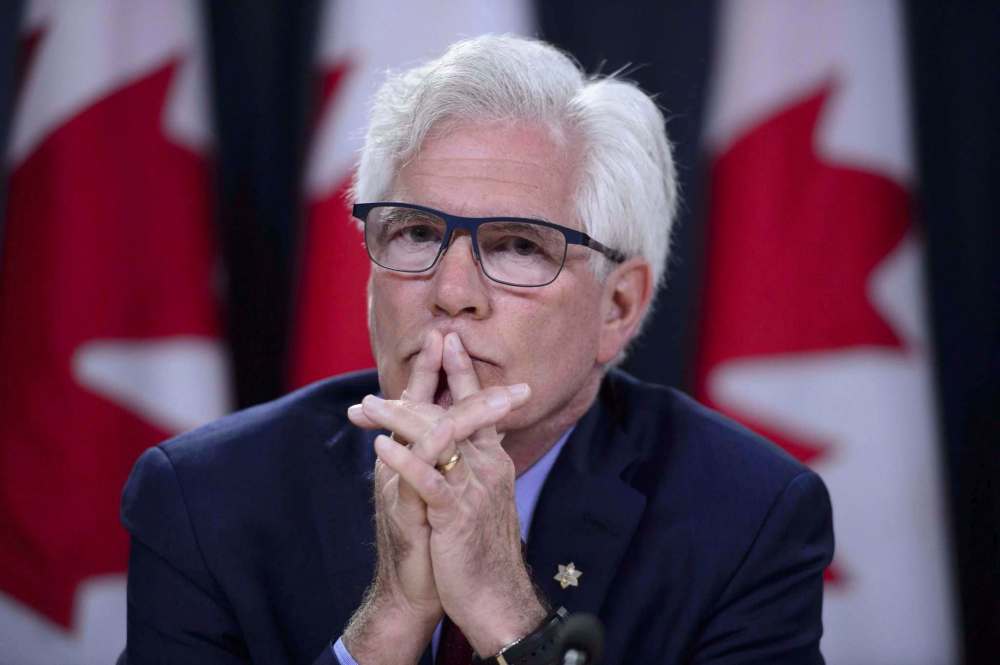Shuffled cabinet faces major trade challenges
Read this article for free:
or
Already have an account? Log in here »
To continue reading, please subscribe:
Monthly Digital Subscription
$0 for the first 4 weeks*
- Enjoy unlimited reading on winnipegfreepress.com
- Read the E-Edition, our digital replica newspaper
- Access News Break, our award-winning app
- Play interactive puzzles
*No charge for 4 weeks then price increases to the regular rate of $19.00 plus GST every four weeks. Offer available to new and qualified returning subscribers only. Cancel any time.
Monthly Digital Subscription
$4.75/week*
- Enjoy unlimited reading on winnipegfreepress.com
- Read the E-Edition, our digital replica newspaper
- Access News Break, our award-winning app
- Play interactive puzzles
*Billed as $19 plus GST every four weeks. Cancel any time.
To continue reading, please subscribe:
Add Free Press access to your Brandon Sun subscription for only an additional
$1 for the first 4 weeks*
*Your next subscription payment will increase by $1.00 and you will be charged $16.99 plus GST for four weeks. After four weeks, your payment will increase to $23.99 plus GST every four weeks.
Read unlimited articles for free today:
or
Already have an account? Log in here »
Hey there, time traveller!
This article was published 25/07/2018 (2700 days ago), so information in it may no longer be current.
The July 18 cabinet shuffle that put Winnipeg’s Jim Carr into the International Trade Diversification hot seat pulled together the ministerial group that must prepare Canada for a period of narrowed access to the United States. Still to come is the plan showing what this team is supposed to do.
While Mr. Carr is diversifying Canada’s trade, Dominic LeBlanc is supposed to remove trade barriers among provinces, Amarjeet Sohi is supposed to build pipelines to export Alberta’s oil, Bill Blair is supposed to manage the borders in a trade-sensitive way and Mary Ng is supposed to turn startup companies into exporters.
All of these are worthwhile endeavours under any circumstances. They may suddenly become desperately important if U.S. President Donald Trump carries out his threats to curtail trade between Canada and the U.S. He has already imposed tariffs on Canadian steel and aluminum. He threatens barriers on automobiles and parts and on uranium. All of this would be done ostensibly to protect U.S. national security, but the real intent is to bully Canada into accepting U.S. demands for changes to the North American Free Trade Agreement.

At the same time, Mr. Trump has been saying he might seek a separate deal with Mexico, leaving Canada to negotiate one-on-one for a trade treaty with the U.S. The longer he drags this out, the longer companies are left wondering if their Canadian plants will be able to ship products into the U.S. market.
At the moment, it seems likely that Mr. Trump and his Republican party will lose support in the November midterm congressional elections so that he may have to scale back his protectionist plans, but there is no way of knowing that with certainty this summer.
Canada’s companies and its economic ministers have to plan for two different kinds of future: one in which the U.S. market is open to Canadian products, and another where Canada is outside the fence.
To start with, Mr. Carr should revive the government’s interest in its embryonic trade treaty with Japan and nine other Pacific Rim countries — the grandly titled Comprehensive and Progressive Agreement for Trans-Pacific Partnership. All 11 countries have signed, but so far only Japan, Mexico and Singapore have ratified. Mr. Trump pulled out but later said he might want back in.
The Canadian auto industry and the government have been of two minds about auto-trade rules with Japan for fear of undermining the current automotive deal with the U.S. and Mexico. Mr. Carr and his colleagues need to work out a way of playing on both tables at once until the U.S. decides whether it is in or out.
Meanwhile, Mr. Carr and his colleagues have to press ahead with boosting sales to the U.K., Europe, Mexico, Chile and other non-U.S. markets that seem receptive to Canadian products. The U.S. share of Canadian exports has varied between 73 per cent and 87 per cent in recent years. Proximity dictates large dependence on the U.S., even with tariff barriers. The government must do more than ever to open more distant markets or else we may be forced to accept the terms the U.S. imposes upon us.
Eventually, the other trading nations will bring China and the U.S. to end their trade war and agree to a set of trade rules they can all live with. Canada should try to hasten that conclusion, though it may take many years. In the meantime, Canada needs a plan to prosper in a protectionist environment.









